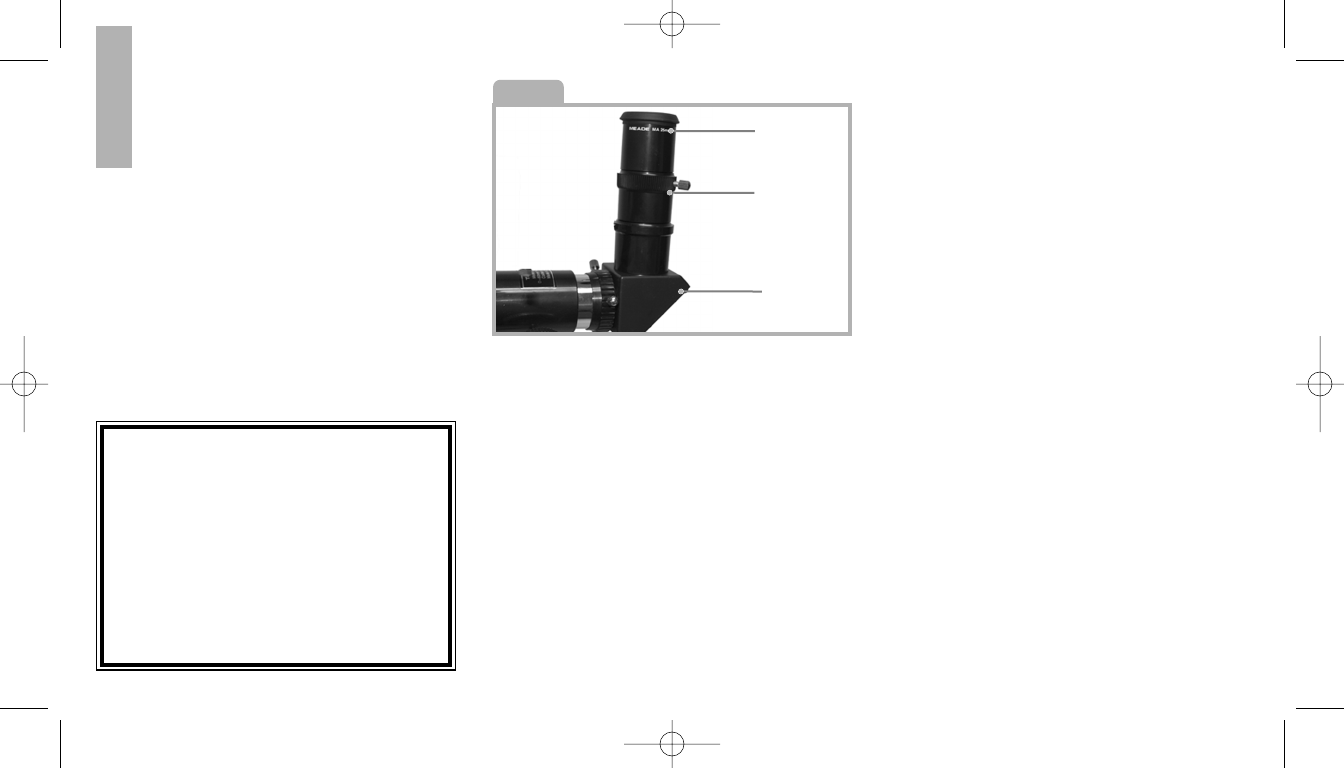
Fig. 6
By the way, you might have noticed
something strange when you looked
through your eyepiece. Although the
image is right-side up, it is reversed.
That means reading words can be a
problem. But it has no affect on
astronomical objects. If you wish to have a
fully corrected image, check out Meade’s
optional Erecting Prism in the Optional
Accessory section.
Barlow lens: You can also change
magnification by using a Barlow lens.
Remove the eyepiece from the diagonal
mirror and slide in the Barlow. Tighten the
thumbscrews to secure the Barlow lens and
the eyepiece in place. The Barlow lens
included with your telescope doubles the
power of your telescope. See Fig. 6.
Meade offers a complete line of eyepieces
for your telescope. Most astronomers have
four or five low-power and high power
eyepieces to view different objects and to
cope with different viewing conditions.
Objects move in the eyepiece: If you are
observing an astronomical object (the Moon,
a planet, star, etc.) you will notice that the
object will begin to move slowly through the
telescopic field of view. This movement is
10
STAR CHARTS
S
tar charts and planispheres are useful for a variety of
reasons. In particular, they are a great aid in planning a
night of celestial viewing.
A wide variety of star charts are available in books, in
magazines, on the internet and on CD Roms. Meade
offers AutoStar Suite
TM
software. Contact your local
Meade dealer or Meade’s Customer Service department
for more information.
Astronomy
and
Sky and Telescope
magazines print star
charts each month for up-to-the-minute maps of the
heavens.
caused by the rotation of the Earth and
makes an object move through the tele-
scope’s field of view. To keep astronomical
objects centered in the field, simply move
the telescope on one or both of its axes—
vertically and/or horizontally as needed—try
using the telescopes coarse and fine
adjustment controls. At higher powers,
astronomical objects will seem to move
through the field of view of the eyepiece
more rapidly.
Place the object to be viewed at the edge of
the field and, without touching the telescope,
watch it drift through the field to the other
side before repositioning the telescope so
that the object to be viewed is again placed
at the edge of the field, ready to be further
observed.
Vibrations: Avoid touching the eyepiece
while observing through the telescope.
Vibrations resulting from such contact will
cause the image to move. Avoid observing
sites where vibrations cause image
movement (for example, near railroad
tracks). Viewing from the upper floors of a
building may also cause image movement.
eyepiece
barlow
diagonal
mirror
Polaris 60 AZ - AR 3/10/06 11:48 AM Page 12


















